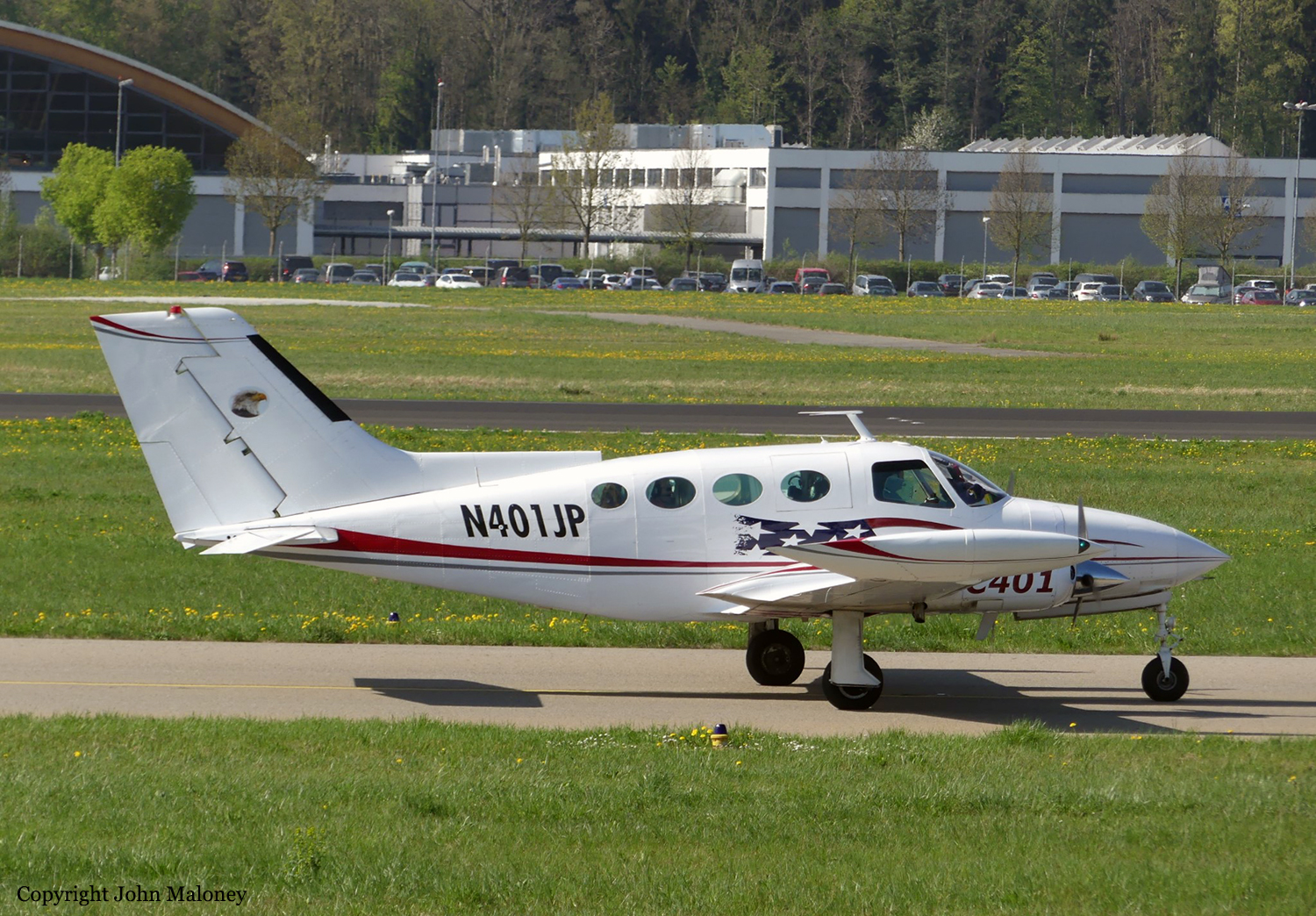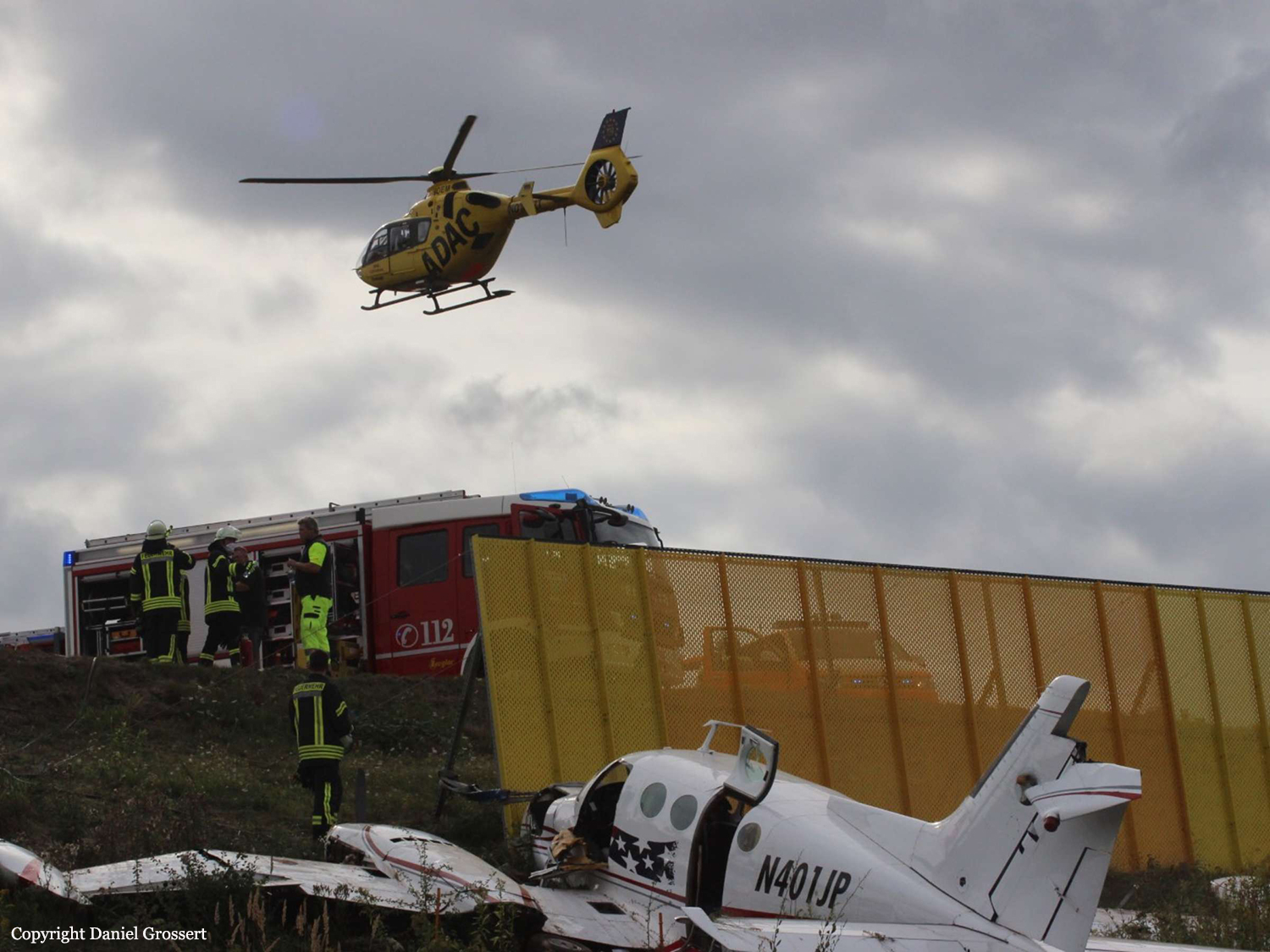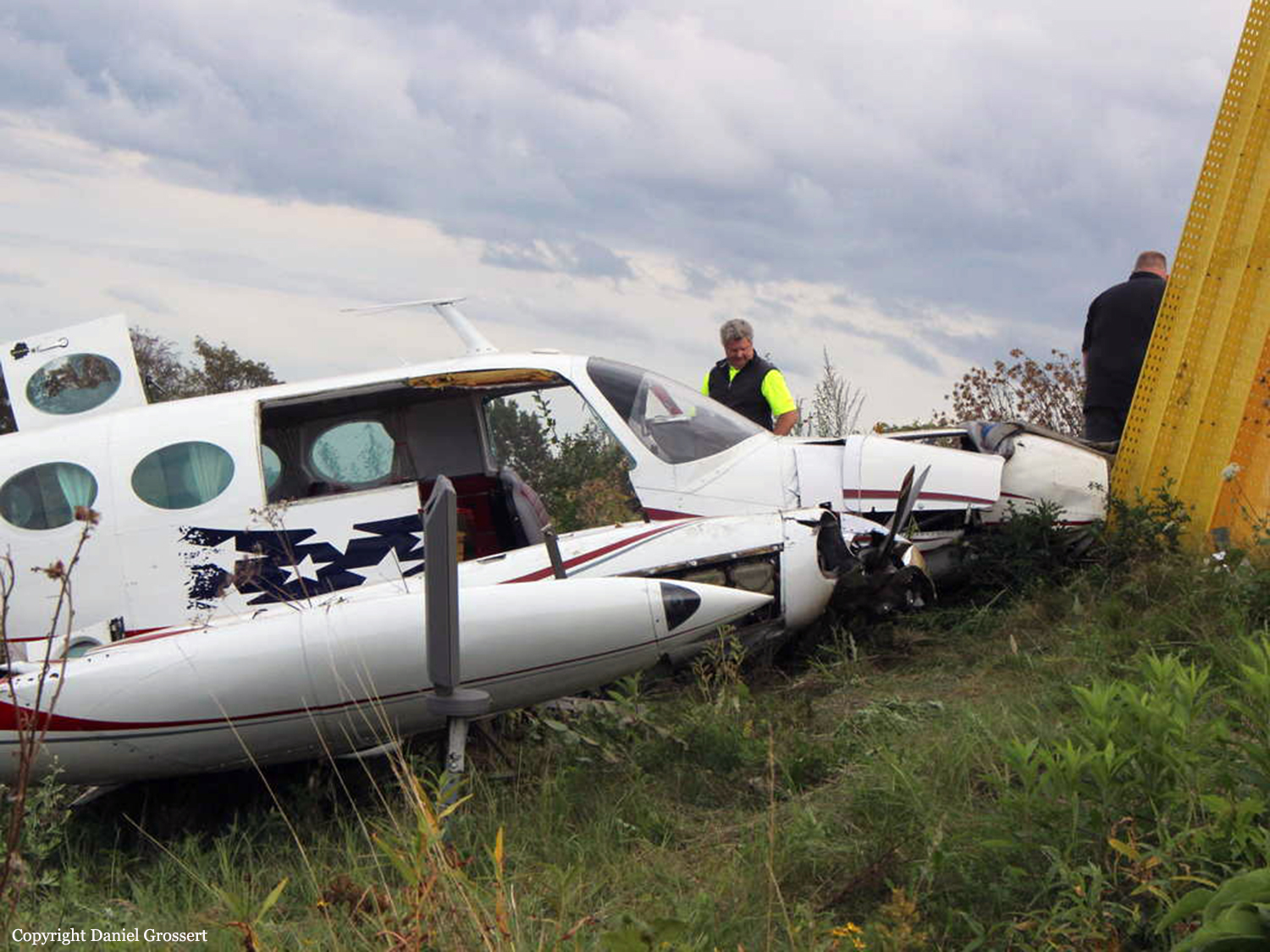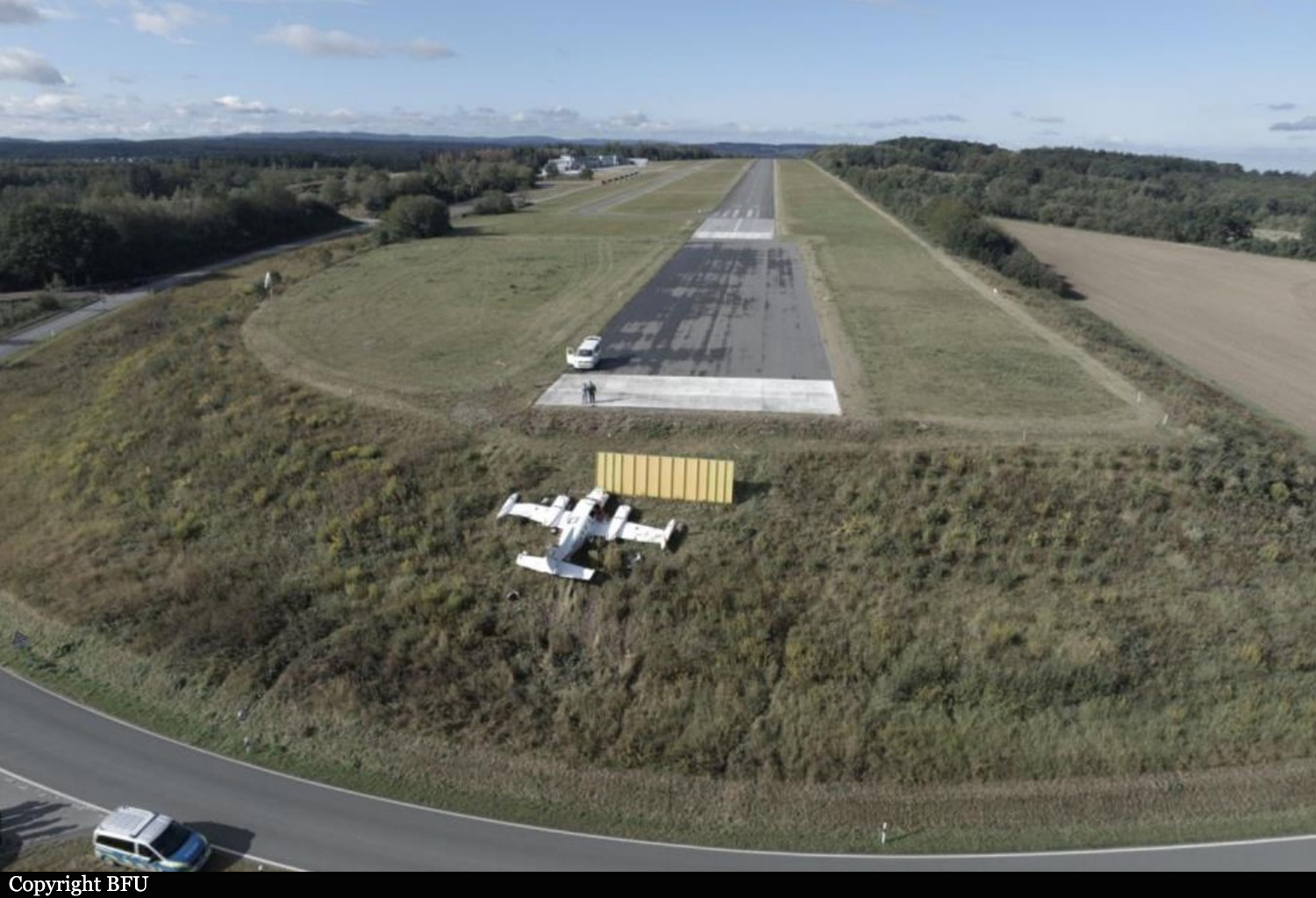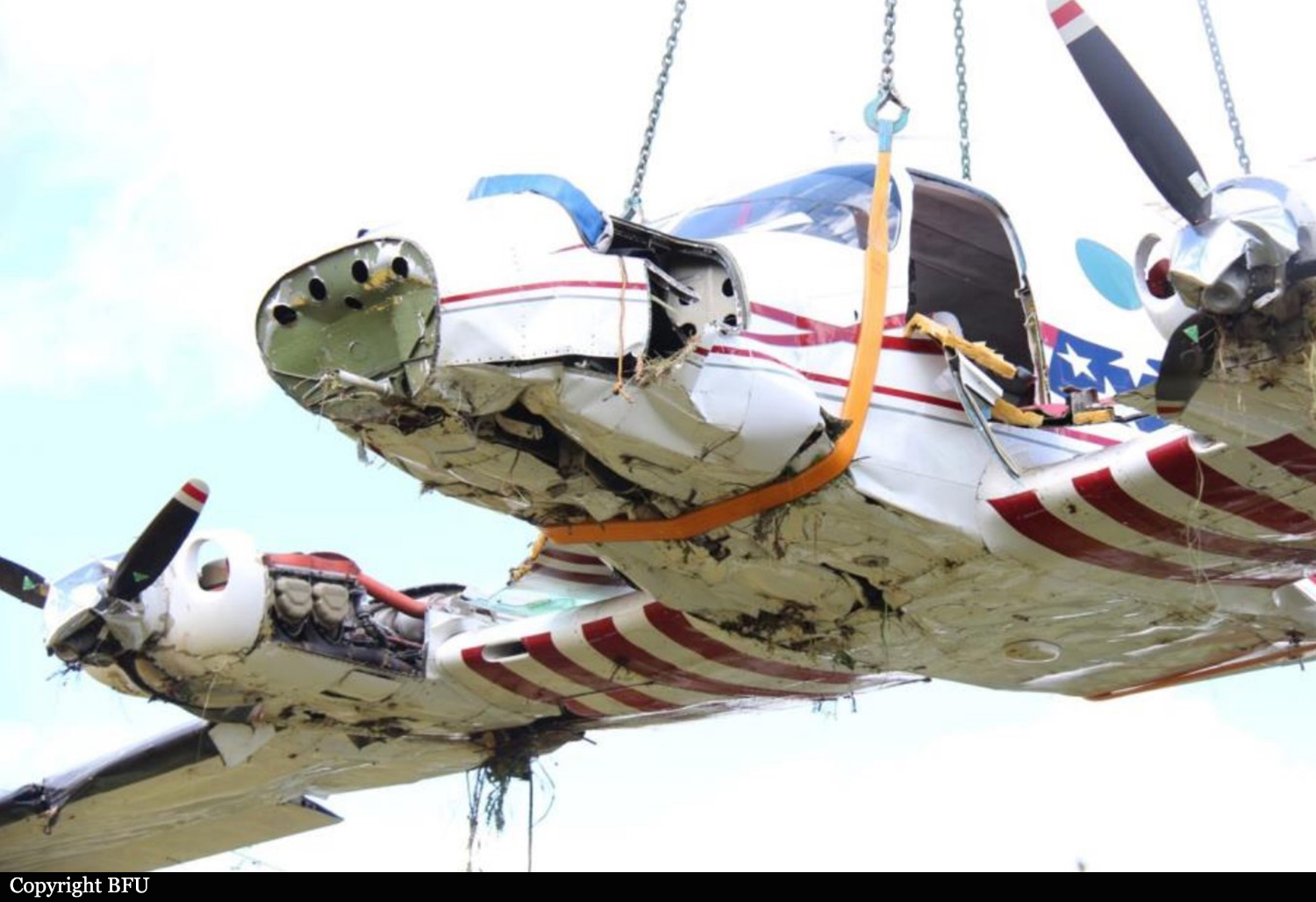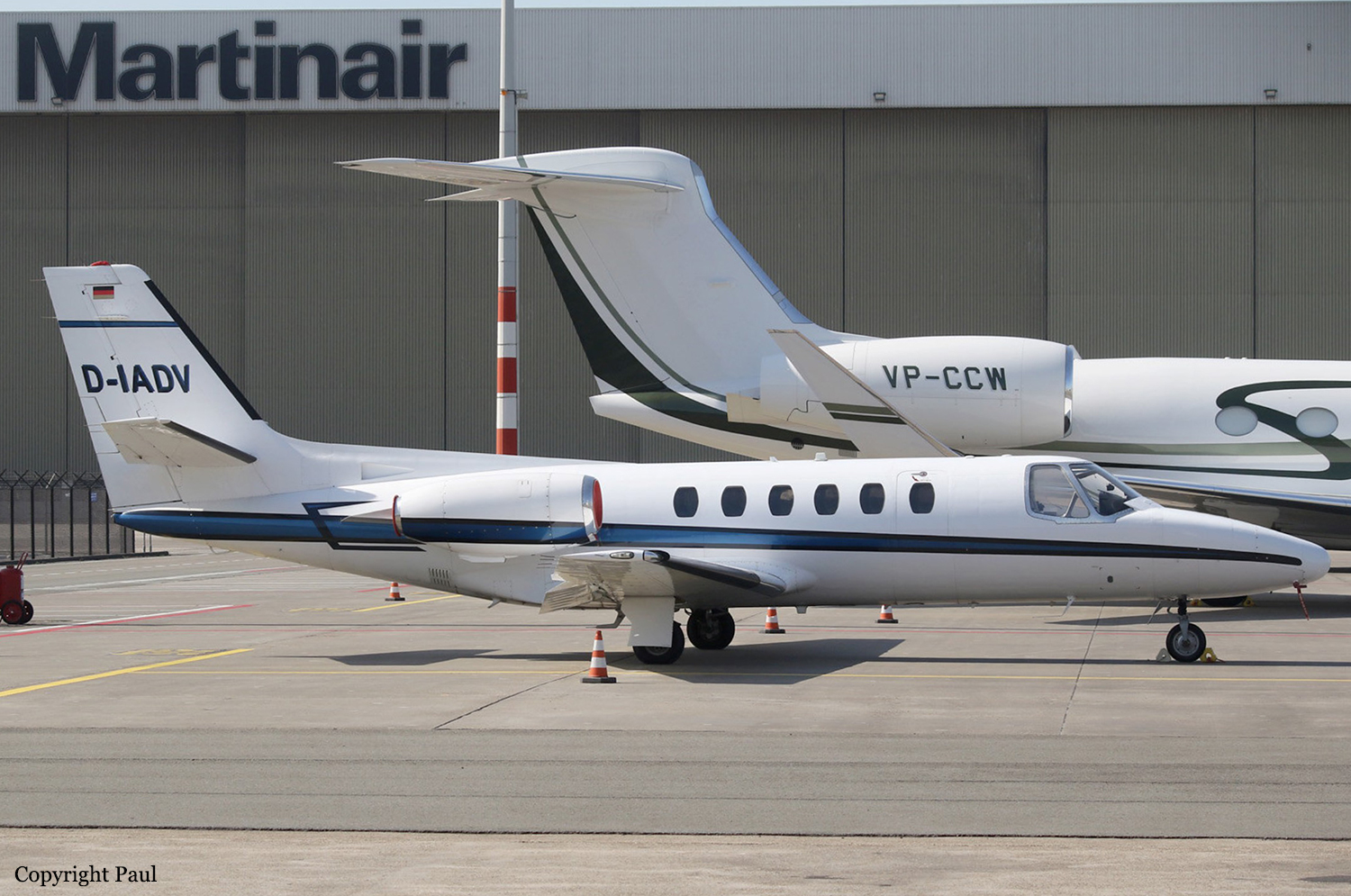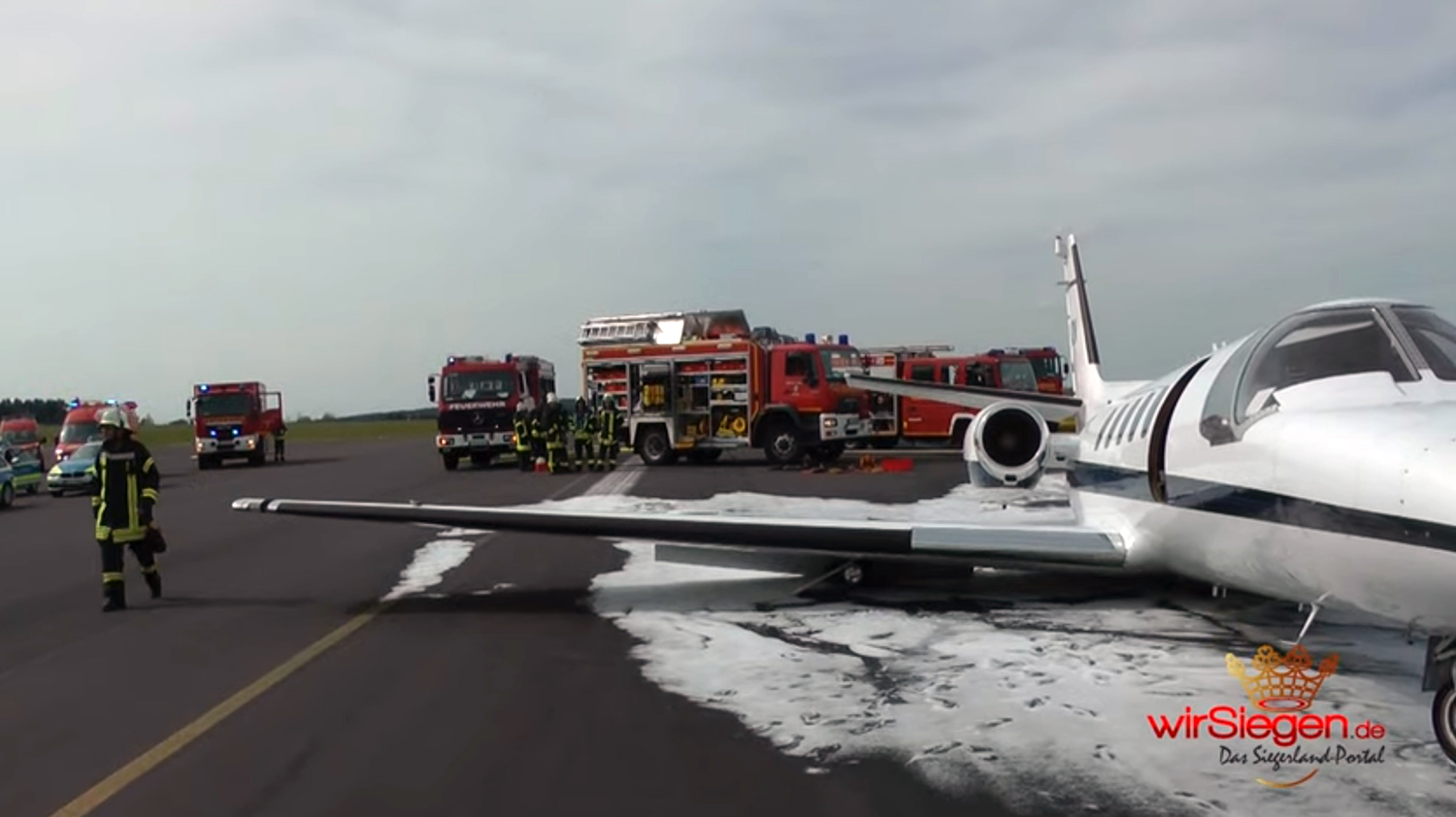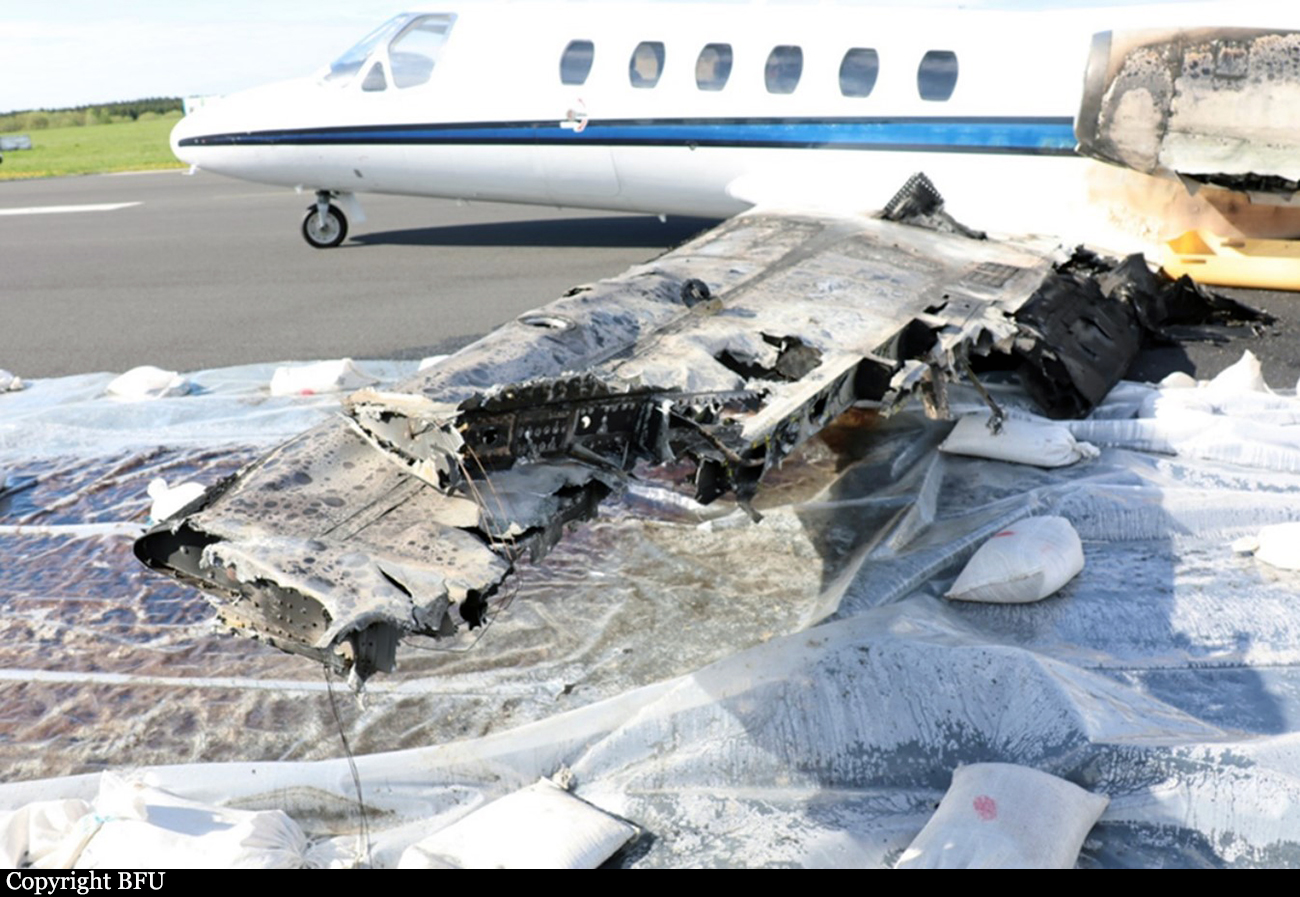Crash of a Cessna 401A in Arnsberg
Date & Time:
Aug 28, 2020 at 1602 LT
Registration:
N401JP
Survivors:
Yes
Schedule:
Marl – Arnsberg
MSN:
401A-0046
YOM:
1969
Crew on board:
1
Crew fatalities:
Pax on board:
2
Pax fatalities:
Other fatalities:
Total fatalities:
0
Captain / Total hours on type:
500.00
Aircraft flight hours:
4568
Aircraft flight cycles:
5945
Circumstances:
At 1541 hrs, the airplane took off from Marl-Lohmühle Airfield with the pilot and 2 passengers on board to a VFR flight to Arnsberg-Menden Airfield which is located approximately 30 NM to the south-east. One of the passengers was seated in the right-hand seat next to the pilot and the other in the passenger seat behind the pilot. The radar recording of the air navigation service provider showed that the airplane climbed up to 2,200 ft AMSL. Ten minutes after take-off, the pilot established radio contact with Dortmund Tower with the request to cross Dortmund Airport control zone via the reporting point WHISKEY towards reporting point ECHO on his way to Arnsberg. At 1552:14 hrs, the tower controller answered: “[…] melden Sie WHISKEY und dann erwarten Sie Durchflug nach Arnsberg oder ECHO, wie Sie möchten, QNH eins null null eins (report WHISKEY and then expect cross flight to Arnsberg or ECHO, as you like, QNH one zero zero one)“. The pilot confirmed QNH and approach point. At 1555:22 hrs, the pilot reported having reached reporting point WHISKEY at 2,200 ft AMSL. The controller approved the flight through the control zone towards the south. The GPS and radar data showed that at 1556 hrs, the airplane turned tight towards 120° to a direct heading to Arnsberg. At 1559 hrs, as the airplane had left the control zone the controller issued the clearance to leave Tower frequency. At 1600 hrs, about 2.5 NM west of the destination aerodrome, the airplane turned left towards the east. About one minute later the airplane intersected the extended runway centre line of runway 23 at a distance of 0.7 NM from the threshold with an eastern heading. At the time, ground speed was approximately 150 kt. At 1601:39 hrs, the airplane turned left towards the final approach of runway 23. At 1602 hrs, about 1 NM from the threshold of runway 23 at about 1,500 ft AMSL, the airplane reached the extended runway centre line. The Flugleiter (A person required by German regulation at uncontrolled aerodromes to provide aerodrome information service to pilots.) stated that during final approach flaps and landing gear of the airplane had been extended. The approach looked normal. For a short time he had no longer observed the airplane because he had made some entries in the computer. His colleague had then addressed him and drew his attention to the speed of the airplane. The Flugleiter saw that the airplane had an upward large pitch angle, then plunged and disappeared from his sight. The airplane impacted the ground and the 3 occupants suffered severe injuries. The Flugleiter stated he had tried in vain to contact the pilot twice and then raised the alarm. His colleague and other first aiders had driven to the accident site immediately.
Probable cause:
The accident was due to:
• The pilot did not correct the approach by increasing engine power or did not abort the approach.
• The pilot did not monitor the airspeed during the final approach and steered the airplane into an uncontrolled flight attitude during the flare.
To the accident contributed that:
• The approach was not stabilized and not aborted.
• The pilot did not pay attention to the PAPI indication and did not perceive the stall warning.
• The large number of continuously changing approach parameters most likely exceeded the limits of the pilot’s capabilities and subsequently, the airplane was no longer controlled in a goal-oriented manner.
• The runway markings did not comply with the required standards.
• The pilot did not correct the approach by increasing engine power or did not abort the approach.
• The pilot did not monitor the airspeed during the final approach and steered the airplane into an uncontrolled flight attitude during the flare.
To the accident contributed that:
• The approach was not stabilized and not aborted.
• The pilot did not pay attention to the PAPI indication and did not perceive the stall warning.
• The large number of continuously changing approach parameters most likely exceeded the limits of the pilot’s capabilities and subsequently, the airplane was no longer controlled in a goal-oriented manner.
• The runway markings did not comply with the required standards.
Final Report:
